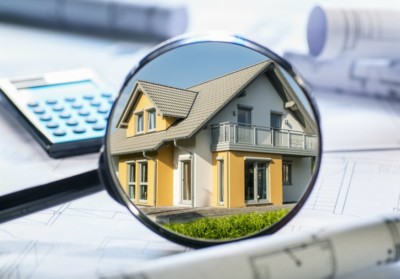Concrete production is booming as housing market momentum continues to mount.

I recently wrote about how housing starts hit a post-recession high, so I decided to drill down deeper and determine where this strength in starts is concentrated and what the new construction housing industry means to our economy. The data did not hold any surprises.
Over the first five months of 2018, the total number of single-family permits issued year-to-date nationwide reached 363,327. On a year-over-year basis, this is a startling 8% increase over the May 2017 level of 336,410. For that same five-month period across the country, single-family permits grew in all the regions except in the Northeast, where it declined by 1% compared to May 2017. Out of the nine Northeastern states, only three, New Hampshire, New York, and Pennsylvania recorded an increase in single-family permit growth during this time while the other six states declined. And there were no surprises as to where the highest growth was: the Western region saw the greatest increase of single-family permits, while the South recorded the highest multifamily permit growth during the last 12 months.
According to the National Association of Homebuilders, between May 2017 and May 2018, 33 states saw growth in single-family permits issued, while 17 states and the District of Columbia registered a decline. Colorado recorded the highest growth rate during this time at 28.7% while single-family permits in the District of Columbia declined by 72.8%; this statistic is a bit misleading, because this number draws from a small base, from 180 in 2017 to 49 in 2018.
In the single-family sector, Texas led with an astonishing 53,293 permits issued year-to-date by May 2018, and Florida came in second with 39,173 during this time. Out of the 13 which are classified as Western states, 9 states recorded single-family permit growth exceeding the national average. A total of 20 states recorded growth rates higher than the national average; 9 of these came from the Western region of the county, 7 from the South, and 3 from the Midwest. New Hampshire was the lone state to record single-family permit growth higher than the national rate from the Northeast region. But here is the most striking of all these data so far: the 10 states issuing the highest number of single-family permits combined accounted for 61% of the single-family permits issued, so there is no second-guessing where all the post-Great Recession growth is concentrated.
Year-to-date through May, the total number of multifamily permits issued nationwide reached 187,605, which is 13.3% ahead of its level over the first five months of 2017 at 165,645. The increase in nationwide growth rate is due to the increases across Southern and Western states which posted growth rates of 17.9% and 17.0% respectively. When we break this down, 34 states recorded growth, while 16 states and the District of Columbia recorded a decline in multifamily permits. Rhode Island lead the way with a growth rate of 365.2%, from 23 to 107, while Mississippi had the largest decline of 85.9% from 866 to 122.
It is worth examining what this strength in single and multi-family housing means to our economy, especially given the explosive growth of the Western states as these data above shows. Housing-related activities contribute to Gross Domestic Product (GDP) in two basic ways.
The first is through residential fixed investment. This metric is effectively the measure of the home building, multifamily development, and remodeling contributions to GDP. It includes construction of new single-family and multifamily structures, residential remodeling, production of manufactured homes, and brokers’ fees. For the first quarter, it stood at 3.5% of the economy, reaching a $603 billion seasonally adjusted annual pace.
The second impact of housing on GDP is the measure of housing services, which includes gross rents, including utilities, paid by renters, and owners’ imputed rent, which is an estimate of how much it would cost to rent owner-occupied units, along with utility payments. The inclusion of owners’ imputed rent is necessary from a national income accounting approach, because without this measure, increases in homeownership would result in declines for GDP.
For the first quarter, housing services was 11.8% of the economy, or $2.06 trillion on a seasonally adjusted annual basis; taken together, housing’s share of GDP was 15.3% for the quarter. Historically, residential fixed investment has averaged roughly 5% of GDP while housing services have averaged between 12% and 13%, for a combined 17% to 18% of GDP. These shares tend to vary over economic cycles.
What does all this mean? Housing represents just under one dollar in five of all economic activity in our country, which means it has a gigantic impact on our economy and fiscal well-being: few other industries are so singular in their economic impact. As I have said so many times before, housing plays a vital role in the growth of ready-mixed concrete production, and for now, the momentum just continues.
About the Author
Pierre G. Villere serves as president and senior managing partner of Allen-Villere Partners, an investment banking firm with a national practice in the construction materials industry that specializes in mergers & acquisitions. He has a career spanning almost five decades, and volunteers his time to educating the industry as a regular columnist in publications and through presentations at numerous industry events. Contact Pierre via email at pvillere@allenvillere.com. Follow him on Twitter – @allenvillere.

